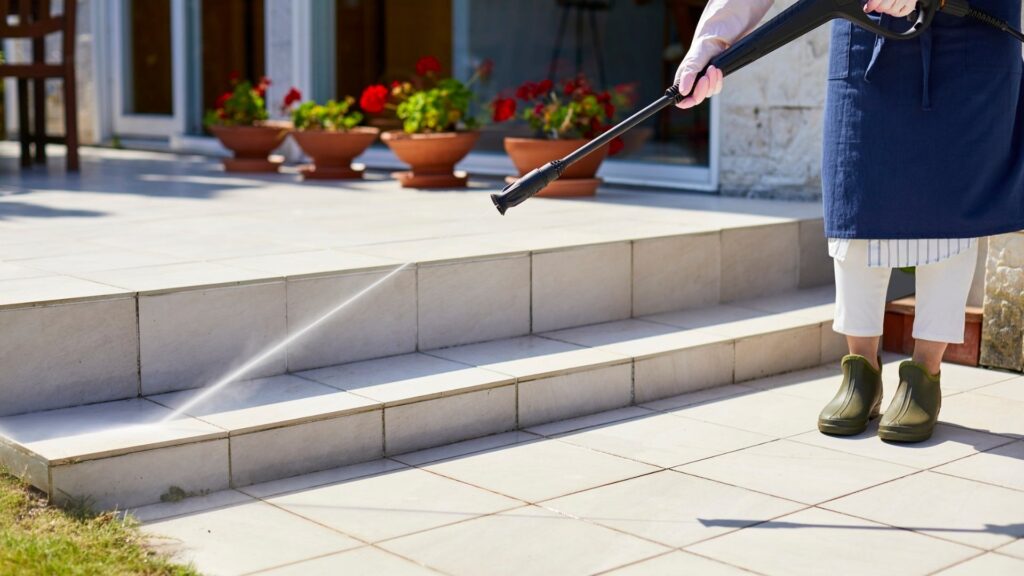An electric pressure washer can turn outdoor cleaning into a fast and satisfying task. It removes dirt, mold, and grime from patios, fences, and vehicles within minutes. That convenience, however, can also lead to mistakes that cause serious damage. A single wrong move may strip paint, crack tiles, or harm delicate surfaces. Many users believe electric models are harmless because they seem less powerful than gas washers, yet that assumption often leads to accidents. By understanding what to avoid when using an electric pressure washer, you protect your property and keep yourself safe. The following electric pressure washer safety tips will help you use it the right way every time.
Understanding Your Electric Pressure Washer
Why I Picked This Topic
Most people think electric washers are easy to use because they plug in and start instantly. That sense of simplicity hides the real power behind the tool. An electric washer can produce enough pressure to carve into wood or force water beneath siding. Gas washers deliver higher PSI levels, but electric models are still powerful enough to demand attention. The difference lies in control. Electric versions allow steady water flow and better handling, which suits homeowners, yet even then, misuse can lead to costly repairs or injuries. That is why this guide focuses on safe control and awareness.
Key Components to Know
To use the washer effectively, you must understand the main parts. The motor drives water pressure through a pump that feeds into the hose. The nozzle directs that flow into different spray patterns. Each nozzle color controls the water spread. The 0° red tip delivers the strongest, most focused stream, while the 40° white tip provides a gentle spray for light cleaning. Knowing these details helps you choose the correct setting and avoid damage. Proper connection of the hose and secure fittings also prevent leaks or pressure loss. When you understand these elements, you can operate the washer safely and confidently.
Another Good Read: Why Standing Desks Improve Focus at Work
What to Avoid When Using an Electric Pressure Washer
1. Avoid Using the Wrong Nozzle or Pressure Setting
Many users start cleaning without checking the nozzle. That is the first mistake. Every color represents a level of force. The red 0° nozzle cuts into concrete, while the green 25° nozzle suits decks or fences. If you aim the wrong nozzle at wood or paint, it can strip layers or leave deep marks. Always test on a small area first. A higher PSI might seem more effective, but too much pressure can ruin the surface you meant to clean. Adjust the setting for the material before each task. Doing this simple step prevents scratches and permanent damage.
2. Avoid Using It on Fragile Surfaces
Electric pressure washers handle strong outdoor cleaning, but not everything can tolerate that power. Avoid washing windows, electrical panels, or air vents. Water pressure can force its way into seals and cause leaks or short circuits. Vehicles require special care as well. Direct streams near mirrors, headlights, or car paint can remove protective coating or cause dents. Use soft wash attachments for these areas instead. Safe power washing techniques depend on knowing when gentle cleaning is enough. If the surface looks delicate or unstable, step back and lower the intensity. That keeps both your tools and surfaces intact.
3. Avoid Skipping Safety Gear
Many people pick up the washer without proper protection. That choice often leads to preventable accidents. Always wear safety goggles to guard against debris that might shoot back from the surface. Gloves protect your hands from vibration and wet grip, while sturdy shoes keep your footing stable. Without these, even a short cleaning task can cause injury. The water stream may seem harmless, yet it can cut skin or throw sharp particles into your eyes. Proper gear transforms your experience from risky to safe. These small precautions support every other safety measure you take.
4. Avoid Poor Electrical Practices
Electric washers rely on water and power at the same time. That combination demands care. Never use an extension cord unless it is rated for outdoor heavy use. Plug the washer into a GFCI outlet to prevent electric shock in case of a short. Keep all connections dry and away from puddles. Avoid running the cord across wet surfaces or leaving it under tension. Always check for cracks or frayed insulation before you start. Most electric pressure washer safety tips highlight this point because it saves lives. Electricity and water must never meet in unsafe conditions.
5. Avoid Pressure Washing at the Wrong Angle
Angle and distance control determine how effective and safe your cleaning becomes. A direct spray at close range cuts deep into materials, while a slanted approach lifts dirt gently. Hold the wand about two feet from the surface and move it smoothly. Keep the motion steady instead of holding the stream in one place. This prevents streaks, gouges, or uneven patches. When cleaning cars or driveways, adjust the nozzle to maintain even pressure. Control matters more than power. A measured approach cleans better and keeps the structure intact.
6. Avoid Running the Washer Without Water
One of the easiest mistakes to make is starting the washer before water runs through the system. Doing so damages the pump instantly. Always connect the hose, turn on the water, and allow it to flow freely before switching the motor on. This ensures internal lubrication and prevents overheating. A dry start burns seals and causes leaks. A simple pre-check can save you costly repairs. Run a quick test by pulling the trigger until a steady stream appears, then begin cleaning. Consistent flow protects both the pump and the motor.
7. Avoid Neglecting Maintenance
Even the best washer fails if you ignore maintenance. Dirty filters, clogged nozzles, or loose hoses reduce performance and shorten lifespan. After each session, flush detergent lines and remove any trapped debris. Check the hose for cracks and tighten all fittings. These steps prevent leaks and pressure drops. Many users overlook this and face problems later. The most common pressure washer maintenance mistakes happen due to neglect rather than wear. Regular attention ensures strong water flow and smooth operation. Clean equipment always delivers better results and prevents costly repairs.
Conclusion – Power, Safety, and Smart Cleaning
Electric pressure washers make outdoor cleaning fast and satisfying when used with care. Understanding what to avoid when using an electric pressure washer gives you control and confidence. Each mistake you prevent protects both your property and your investment. Keep your safety gear ready, select the correct nozzle, and always inspect your setup before you start. Follow these electric pressure washer safety tips, and you will master the art of cleaning with electric pressure washer power without risk. Responsible use and consistent maintenance keep your equipment efficient and your surroundings spotless.






1 thought on “What to Avoid When Using an Electric Pressure Washer”
Pingback: Best Vacuum And Mop Robot - Intell Cook